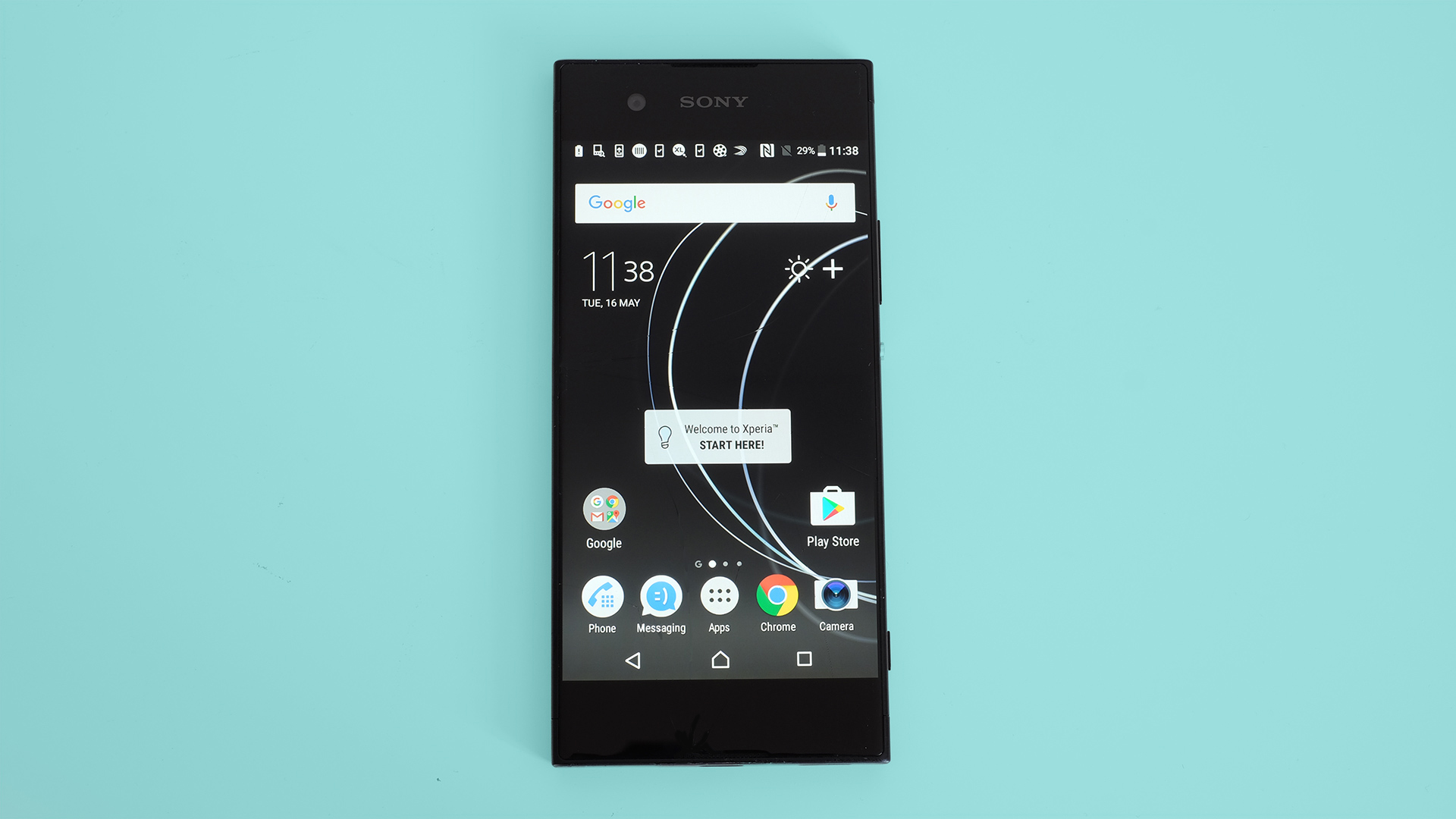Why you can trust TechRadar
Interface and reliability
- Android 7.0 with custom Sony interface
- Fairly quick general performance
- Rejects a few interface conventions of Android
The Sony Xperia XA1 runs Android 7.0 with the custom Sony interface laid on top. You get recent Android improvements like the new notifications system and the Google Assistant, but Sony’s UI is actually like a continuation of Android’s pre-version-5.0 design.
For example, the apps menu comes in pages rather than as a giant alphabetical scroll, and you can arrange your apps menu into folders, and choose the position of apps. Google “simplified” features like this out of existence some time ago.
There’s nothing inherently wrong with Sony’s approach, as long as you haven’t experienced a recent ‘vanilla’ version of Android and will see this as a step backwards. Only one screen smacks of the sort of bloat we like to avoid in custom interfaces, the “app suggestion” display.

You get to this by swiping left-to-right on your apps menu, and it simply houses a few recently used app icons and a bunch of suggested downloads from Google Play. For most, it’s pretty useless, but is also easy to ignore.
The Sony Xperia XA1's interface feels fairly quick for the most part, with no annoying laggy moments as you navigate or type away at the keyboard.
However, app loads are slightly slower than some. Using DDR3 RAM rather than DDR4 (judging by our tests) probably doesn’t help, although the phone’s 32GB of storage is actually reasonably fast, writing at 124MB/s.
Movies, music and gaming
- Features a suite of Sony media apps
- Good gaming performance
- Mono speaker doesn’t impress
Like other Sony phones, the Sony Xperia XA1 does its best to nudge several Google services into the background, attempting to replace them with its own media apps. There are Sony video and music apps, and the Sony PlayStation app for the PS4 owners out there.
The video app is not what you might expect at all. It’s not a video store but a local media player and a way to search what’s on TV, a sort of advanced channel guide. It’s not much use if you mostly watch Netflix these days, but may appeal if you’re still playing it terrestrial.

Its suggestion that a 1983 re-run of Top of the Pops is one of tonight’s favorite TV shows in the UK seems dubious, though. Take its recommendations with a critical eye.
The Music app is a decent iPod-a-like local music player that also lets you hook-in Spotify.
Sony’s PlayStation app is perhaps the most interesting of the lot, because it doesn’t just rehash ideas found elsewhere countless times on Google Play. Instead, it lets you control a PS4 with your Sony Xperia XA1, to type things in without using the gamepad, for example.

On its own, the Sony Xperia XA1 is a good, if not class-leading gaming phone. Its limiting factors are simple. You can get bigger, higher-resolution screens at the price, and the internal speaker here is not that good.
While it looks like there are Sony’s signature front-loaded stereo speakers here, the Sony Xperia XA1 actually just has one speaker on the bottom edge. That means no stereo sound, and the lone speaker isn’t all that loud or powerful-sounding.
Every game we tried ran very well on the Sony Xperia XA1, though. While the phone doesn’t have a high-end CPU/GPU, it’s easily powerful enough to make games sing at the native 720p resolution.

Performance and benchmarks
- Smooth general performance
- Slightly lower Geekbench score than Moto G5 Plus
The Sony Xperia XA1 has a MediaTek Helio P20 CPU with 3GB of DDR3 RAM. This CPU has eight Cortex-A53 cores, four at 2.3GHz and four at 1.6GHz. A Mali-T880MP2 provides graphics power.
Judging by the performance of some phones with the last-gen Helio P10, this setup might struggle if the Sony Xperia XA1 had a 1080p screen, but it doesn’t. Everything seems to run rather nicely, the only obvious performance trade-off being in app load speeds, which are slightly slower than the XA1’s big brothers.
In Geekbench 4, the Sony Xperia XA1 scores a solid 3,628 (809 per core) points, around 200 less than the 3,824 score the Moto G5 Plus achieved in our tests. Don’t read too much into that, though. This phone is very much in the same league as the Moto G5 Plus and its smaller brother, the Moto G5.
The three all use Cortex-A53 cores, and the G5 Plus has the advantage of a 14nm die process rather than a 16nm one. However, that’s not too grand a difference. These numbers refer to the size of transistors in a CPU, 14/16 nanometers. In summary: the smaller, the better.
Current page: What's it like to use?
Prev Page Introduction, design and display Next Page Battery life and cameraAndrew is a freelance journalist and has been writing and editing for some of the UK's top tech and lifestyle publications including TrustedReviews, Stuff, T3, TechRadar, Lifehacker and others.

